Toddlers who have leaned to walk independently will start to step up onto a very low step, and then up onto progressively higher steps.
Visual pickup for stepping up
Walking on different surfaces provides the toddler with experience of using visual information to guide the postural adjustments and movements needed to a achieve a goal.
Visual pickup provides information about the height and position of the step.
Visual pickup also allows the toddler to select a strategy for stepping - step up directly or use and all fours strategy.
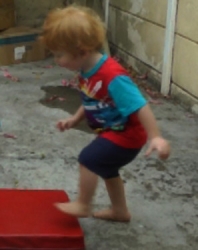
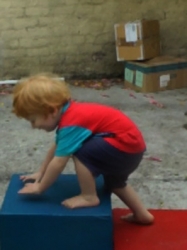
Analysis of postural adjustments and movement sequences
Stepping up is divided into a support and swing phase for each LE. The support phase includes a single and double LE support
Weight shift onto one lower - in this example the right LE
- The COM shifted laterally over the new BOS
- The CoP is also shifted in a posterior direction to accommodate the change in alignment of the body segments when the LE is lifted forwards
- Stance hip is adducted – to maintain a level pelvis – this requires increased activity in the hip abductor muscles
- Hip and knee extensor muscles increase level of activity to support increased body weight
- Ankle muscles activated to control the position of the shank over the foot.
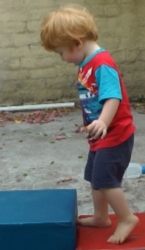
The contralateral foot is lifted up onto the step
Hip and knee flexion to lift the foot up high enough to clear the step
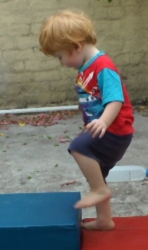
Extension of the knee to move the foot over the step
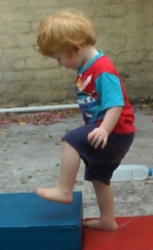
Foot is planted on the step
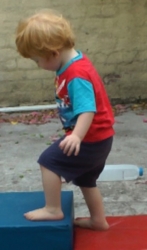
Weight transferred onto the leading LE
Rapid increase in hip and knee extensor activity to provide the impulse for raising the COM up and forwards.
Adjustment of the alignment of the trunk and limbs to maintain the COM over the new BOS.
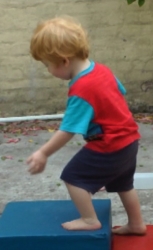
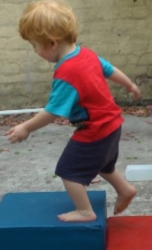
The foot of the trailing LE is lifted up onto the step.
The hip and knee of the trailing LE are flexed to lift it up onto the step.
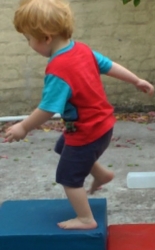
The foot of the trailing LE is planted on the step
And COM is shifted to the left as the new BOS is established.
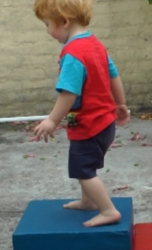
How the height of the step influences the movement sequence
Max stepping up onto a low step
A low step (relative to the height of the individual) will usually allow a toddler with some experience to take a step forwards, plant on foot close to the step and step up without hesitation.
The postural adjustments and movement sequence resemble that of walking. Importantly the toddler is able to transfer the weight forwards over the leading LE by extending the hip of the stance LE.
When stepping up onto a low step Max translates the COM forwards over the stance LE while at the same times flexing the hip and knee of the swing LE.
Notice that Max still lifts the foot higher than is necessary to clear the step.
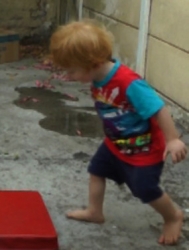
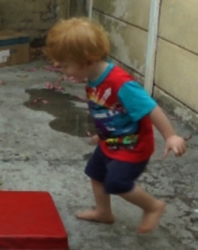
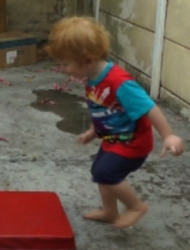
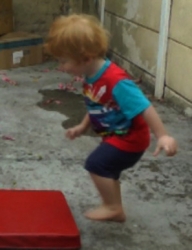

Weight is then smoothly transferred forwards onto the left LE.
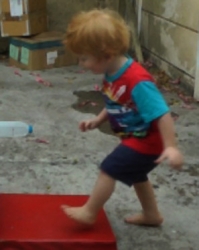
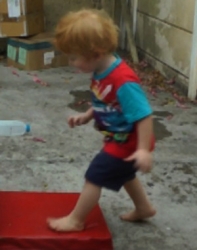
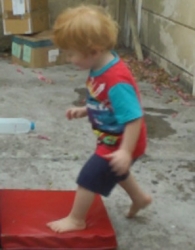
Once the weight is fully on the left, now stance LE, the COM is moved forwards by extending the left hip, in a smooth continuous movement.
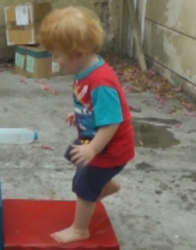
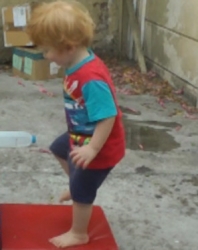
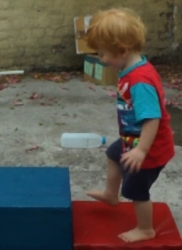
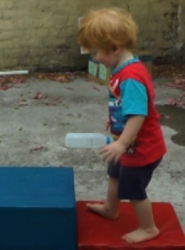
Max stepping up onto a 15 cm high step
Negotiating a higher step requires a different strategy. You also see how carefully Max visually monitors his actions.
1 Firstly the feet are positioned close to the step.
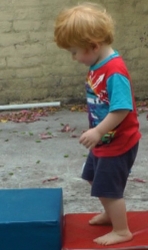
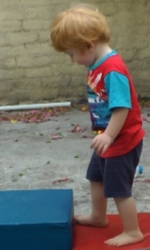

2 The right hip and knee are flexed to lift the foot up, then the knee is extended to move the foot forwards over the step.
3 The COM remains centered over the right LE as he balances on the right LE.
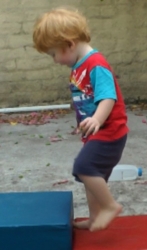

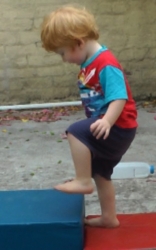

4 Next Max plants the left foot on the step and shifts the weight forwards and laterally onto this new stance LE.
Notice how Max carefully balances on the stance limb as he moves the right foot up and forwards. This is associated with knee extension rather than hip extension.
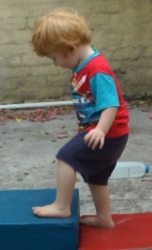



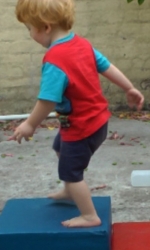
5 Lastly he takes a small step forwards with the left foot - this small forwards step help the absorb the momentum created by moving the COM forwards.

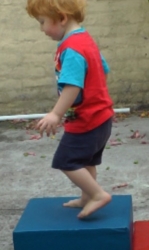
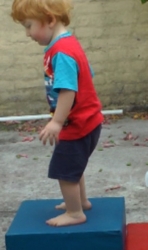
Video clip: Max stepping up
What next: Training stepping up